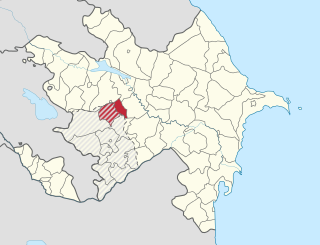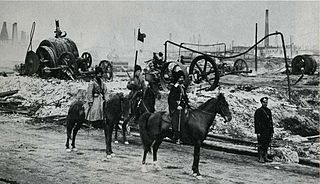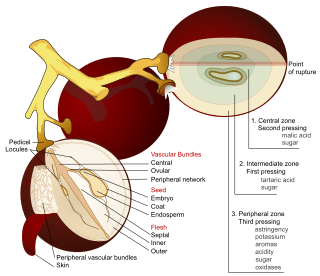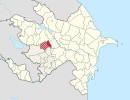
Tartar sauce is a condiment composed of mayonnaise and finely chopped capers. Tartar sauce can also be enhanced with the addition of gherkins, other varieties of pickles, and lemon juice as well as herbs such as dill and parsley.

Tartaric acid is a white, crystalline organic acid that occurs naturally in many fruits, most notably in grapes, but also in bananas, tamarinds, and citrus. Its salt, potassium bitartrate, commonly known as cream of tartar, develops naturally in the process of winemaking. It is commonly mixed with sodium bicarbonate and is sold as baking powder used as a leavening agent in food preparation. The acid itself is added to foods as an antioxidant E334 and to impart its distinctive sour taste.

Baking powder is a dry chemical leavening agent, a mixture of a carbonate or bicarbonate and a weak acid. The base and acid are prevented from reacting prematurely by the inclusion of a buffer such as cornstarch. Baking powder is used to increase the volume and lighten the texture of baked goods. It works by releasing carbon dioxide gas into a batter or dough through an acid-base reaction, causing bubbles in the wet mixture to expand and thus leavening the mixture. The first single-acting baking powder was developed by food manufacturer Alfred Bird in England in 1843. The first double-acting baking powder was developed by Eben Norton Horsford in America in the 1860s.

Tartary or Great Tartary, was a historical region located in northern and central Asia stretching eastwards from the Caspian Sea and from the Ural Mountains to the Pacific Ocean, inhabited mostly by Turkic peoples.

Potassium bitartrate, also known as potassium hydrogen tartrate, with formula KC4H5O6, is a byproduct of winemaking. In cooking it is known as cream of tartar. It is the potassium acid salt of tartaric acid (a carboxylic acid). It can be used in baking or as a cleaning solution (when mixed with an acidic solution such as lemon juice or white vinegar).

Steak tartare is a meat dish made from raw ground meat. It is usually served with onions, capers, pepper and Worcestershire sauce, and other seasonings, often presented to the diner separately, to be added to taste. It is often served with a raw egg yolk, and often on rye bread.

Ujar Rayon is a rayon of Azerbaijan, situated to the south of Goycay, 234 km out of Baku, in the centre of the country. This region contains the Baku-Tbilisi-Ceyhan pipeline to the south of the Shirvan plain.

Michael Strogoff: The Courier of the Czar is a novel written by Jules Verne in 1876. Critics, including Leonard S. Davidow, consider it one of Verne's best books. Davidow wrote, "Jules Verne has written no better book than this, in fact it is deservedly ranked as one of the most thrilling tales ever written." Unlike some of Verne's other novels, it is not science fiction, but a scientific phenomenon is a plot device. The book was later adapted to a play, by Verne himself and Adolphe d'Ennery. Incidental music to the play was written by Alexandre Artus in 1880. The book has been adapted several times for films, television and cartoon series.

The General Dynamics RIM-24 Tartar was a medium-range naval surface-to-air missile (SAM), and was among the earliest surface-to-air missiles to equip United States Navy ships. The Tartar was the third of the so-called "3 T's", the three primary SAMs the Navy fielded in the 1960s and 1970s, the others being the RIM-2 Terrier and RIM-8 Talos.

Tartar is a district of Azerbaijan. Since the Nagorno-Karabakh War, most of it has been under the control of the unrecognized Republic of Artsakh, governed as part of its Martakert Province.

Tərtər is a city in and the capital of the Tartar Rayon of Azerbaijan.

The Armenian–Tatar massacres refers to the bloody inter-ethnic confrontation between Armenians and Azerbaijanis throughout the Russian Caucasus in 1905–1907.

HMS Tartar was a Tribal-class destroyer of the Royal Navy that saw service in most of the naval theatres of World War II. She had an eventful career, eventually receiving the nickname 'Lucky Tartar' due to her numerous escapes from dangerous situations. She was one of only four from the sixteen Royal Navy-operated Tribal-class destroyers to survive the war.

Qazyan is a village in the Qubadli Rayon of Azerbaijan.
Qazyan or Qəziyan or Kaz’yan or Kaziyan may refer to:

Qazyan is a village and municipality in the Ujar Rayon of Azerbaijan. It has a population of 6,018.

The acids in wine are an important component in both winemaking and the finished product of wine. They are present in both grapes and wine, having direct influences on the color, balance and taste of the wine as well as the growth and vitality of yeast during fermentation and protecting the wine from bacteria. The measure of the amount of acidity in wine is known as the “titratable acidity” or “total acidity”, which refers to the test that yields the total of all acids present, while strength of acidity is measured according to pH, with most wines having a pH between 2.9 and 3.9. Generally, the lower the pH, the higher the acidity in the wine. However, there is no direct connection between total acidity and pH. In wine tasting, the term “acidity” refers to the fresh, tart and sour attributes of the wine which are evaluated in relation to how well the acidity balances out the sweetness and bitter components of the wine such as tannins. Three primary acids are found in wine grapes: tartaric, malic and citric acids. During the course of winemaking and in the finished wines, acetic, butyric, lactic and succinic acids can play significant roles. Most of the acids involved with wine are fixed acids with the notable exception of acetic acid, mostly found in vinegar, which is volatile and can contribute to the wine fault known as volatile acidity. Sometimes, additional acids, such as ascorbic, sorbic and sulfurous acids, are used in winemaking.
Tartar Island is a small (13 ha), ice-free, oval-shaped island 0.6 km (0.37 mi) long, lying 0.7 km (0.43 mi) north-west of Round Point, off the north coast of King George Island in the South Shetland Islands of Antarctica. It was named by the United Kingdom Antarctic Place-Names Committee (UK-APC) in 1960 for the sealing vessel Tartar from London, which visited the South Shetland Islands in 1821-22.
Tartar was a British Thoroughbred racehorse best known for winning the classic St Leger Stakes in 1792. One of the smallest horses to win a classic, he won the St Leger on his racecourse debut in September 1792. He won twice in the following season before racing without success in 1794.
















